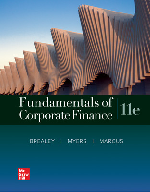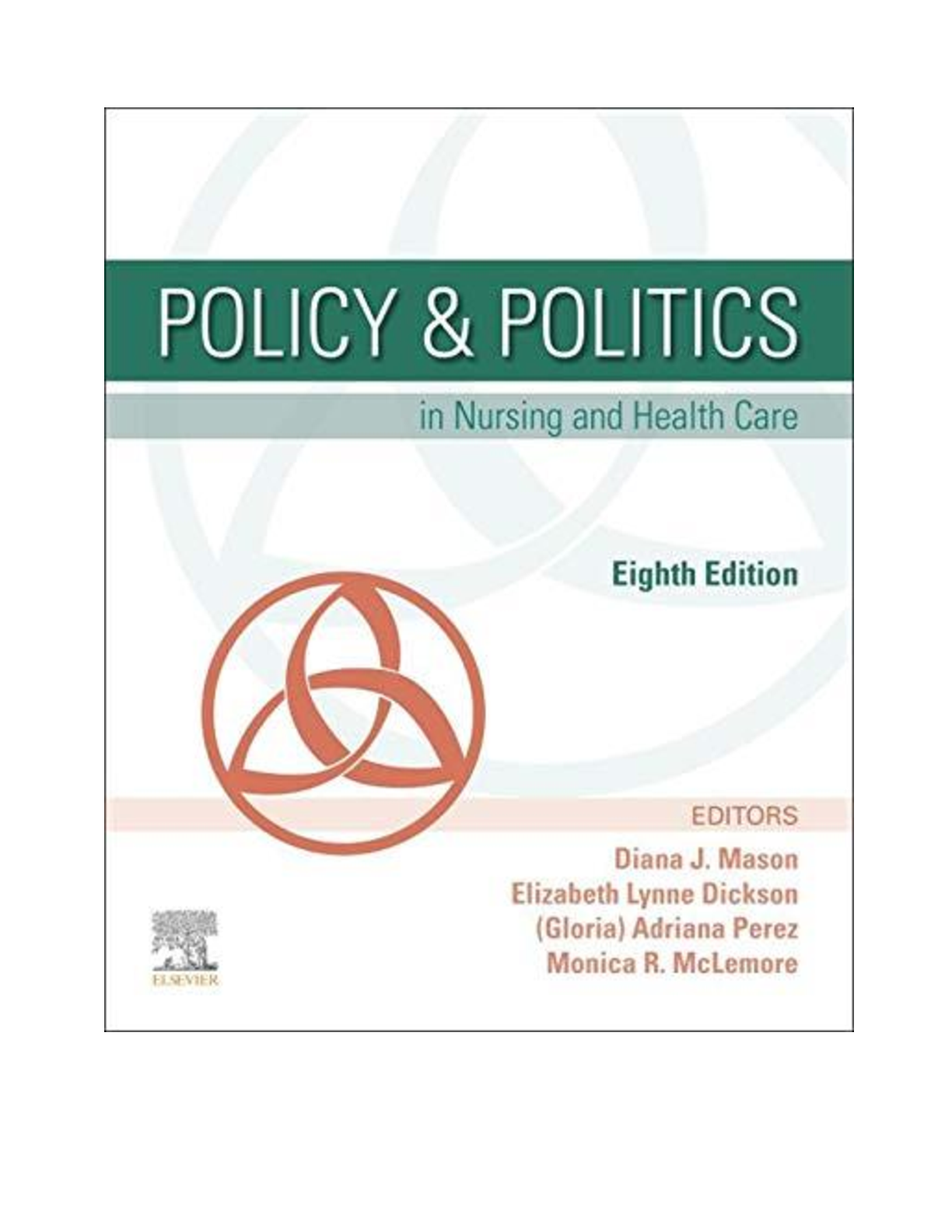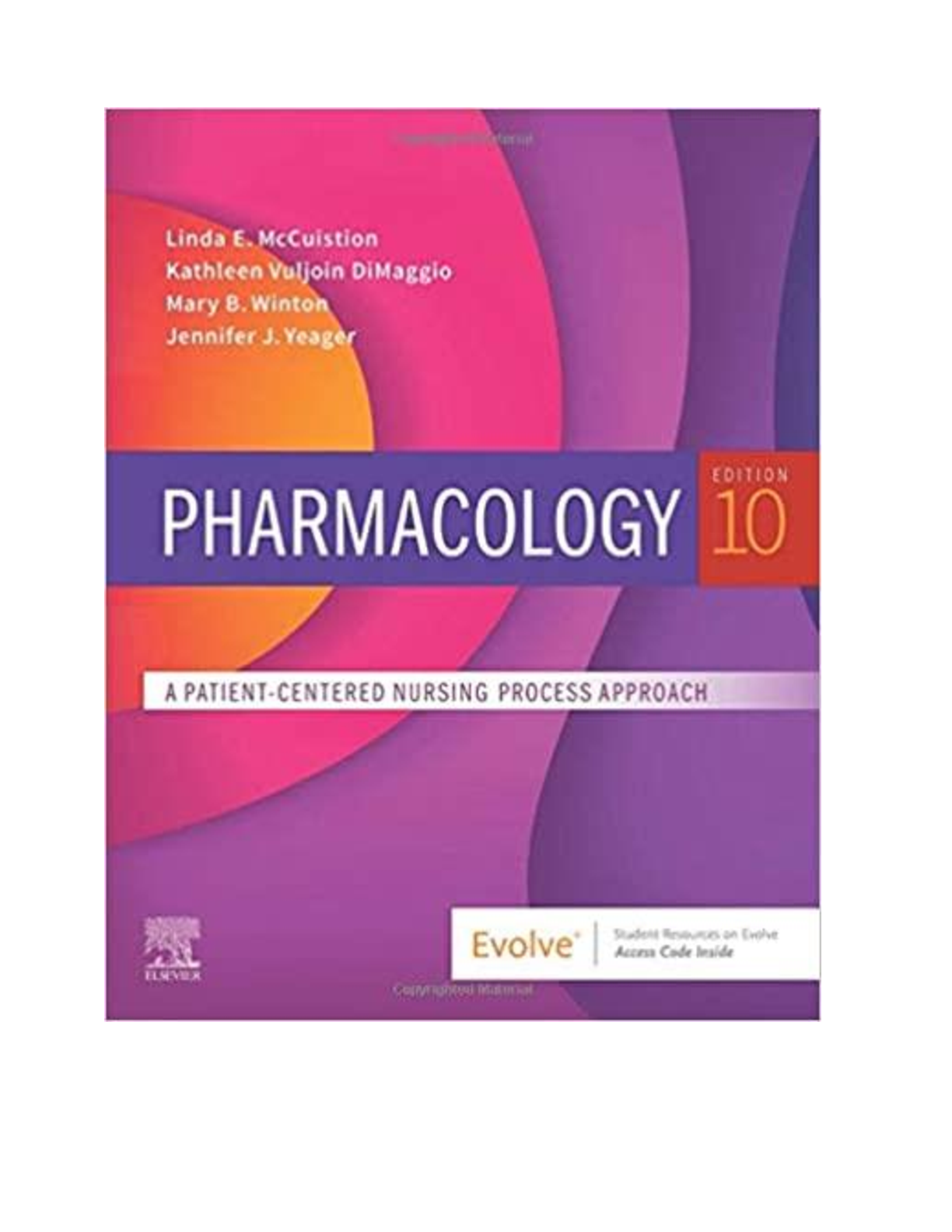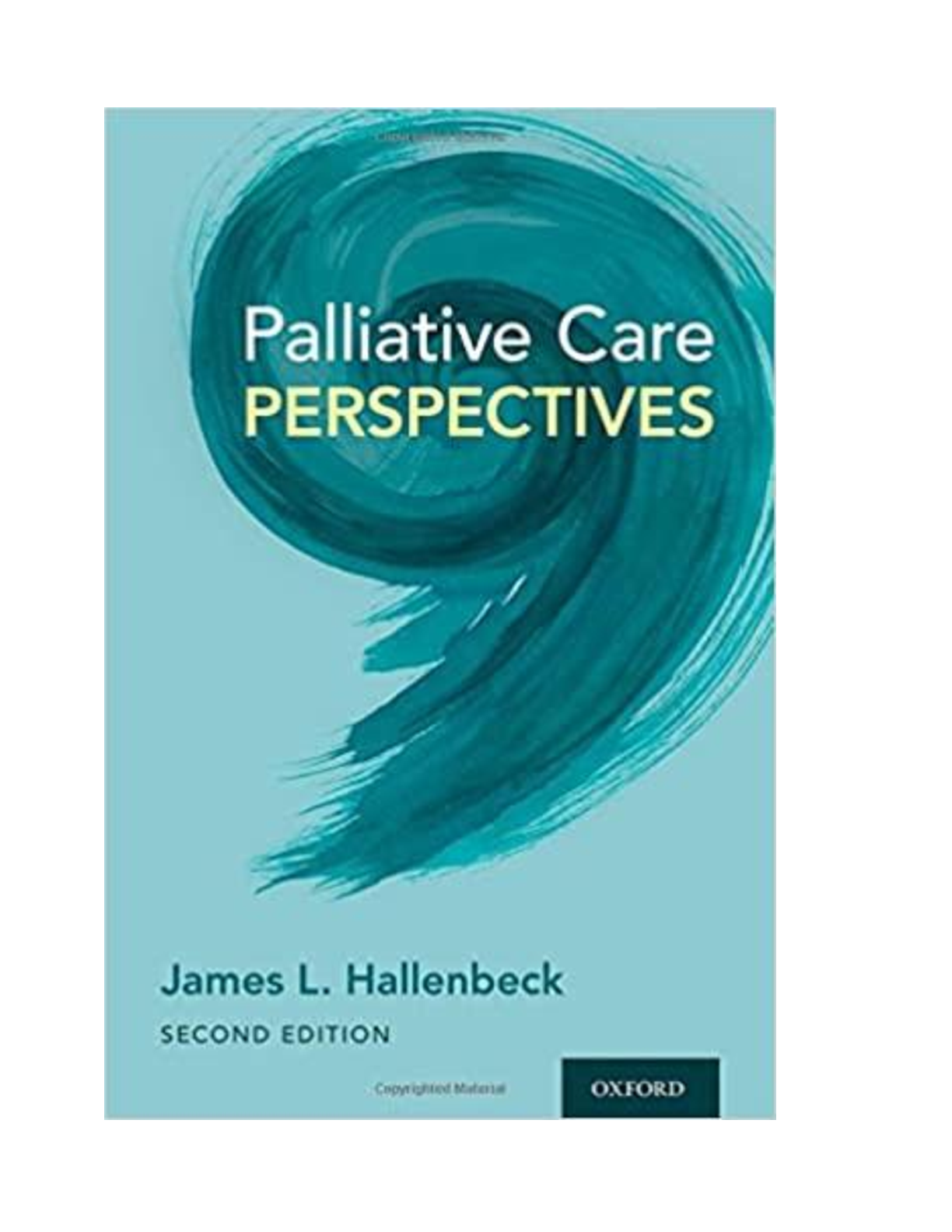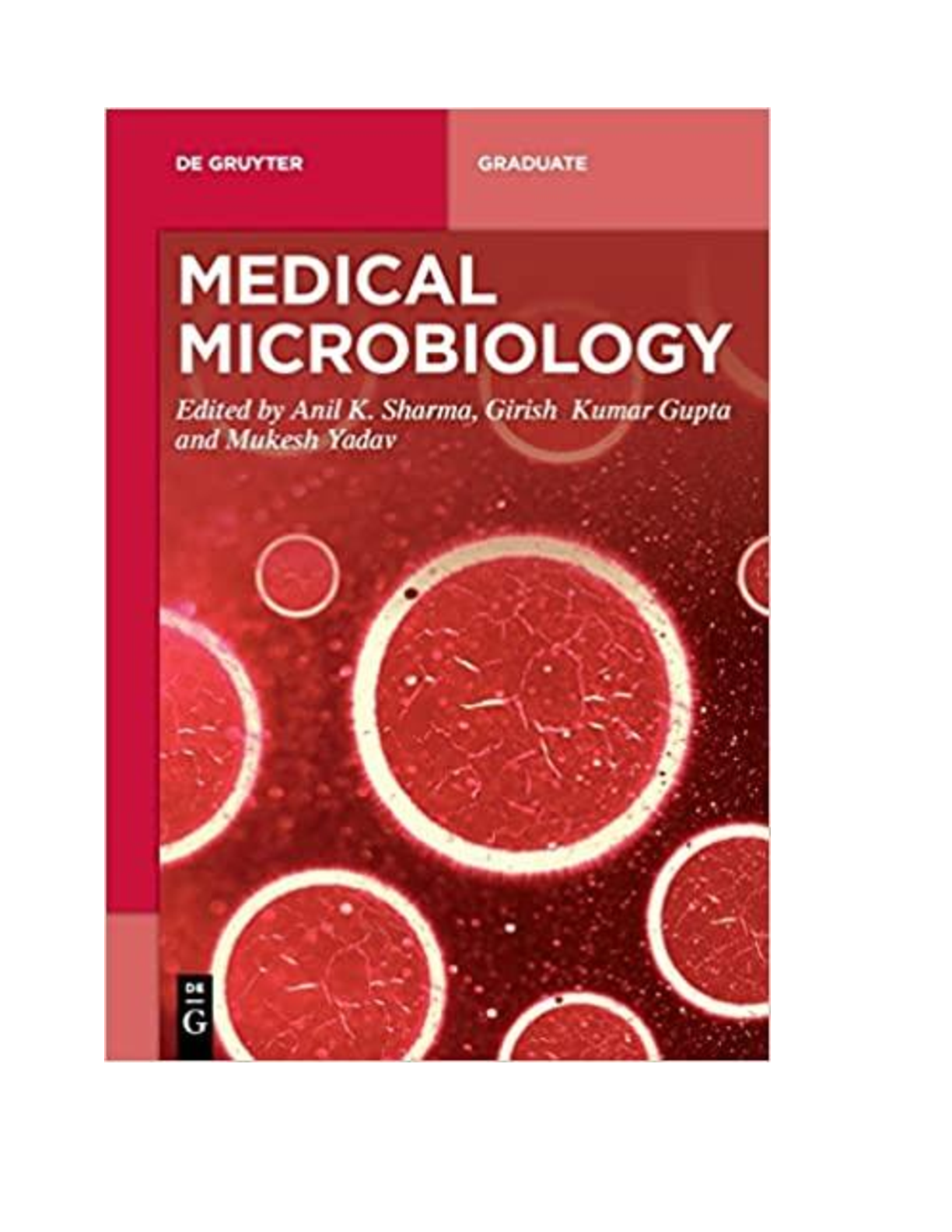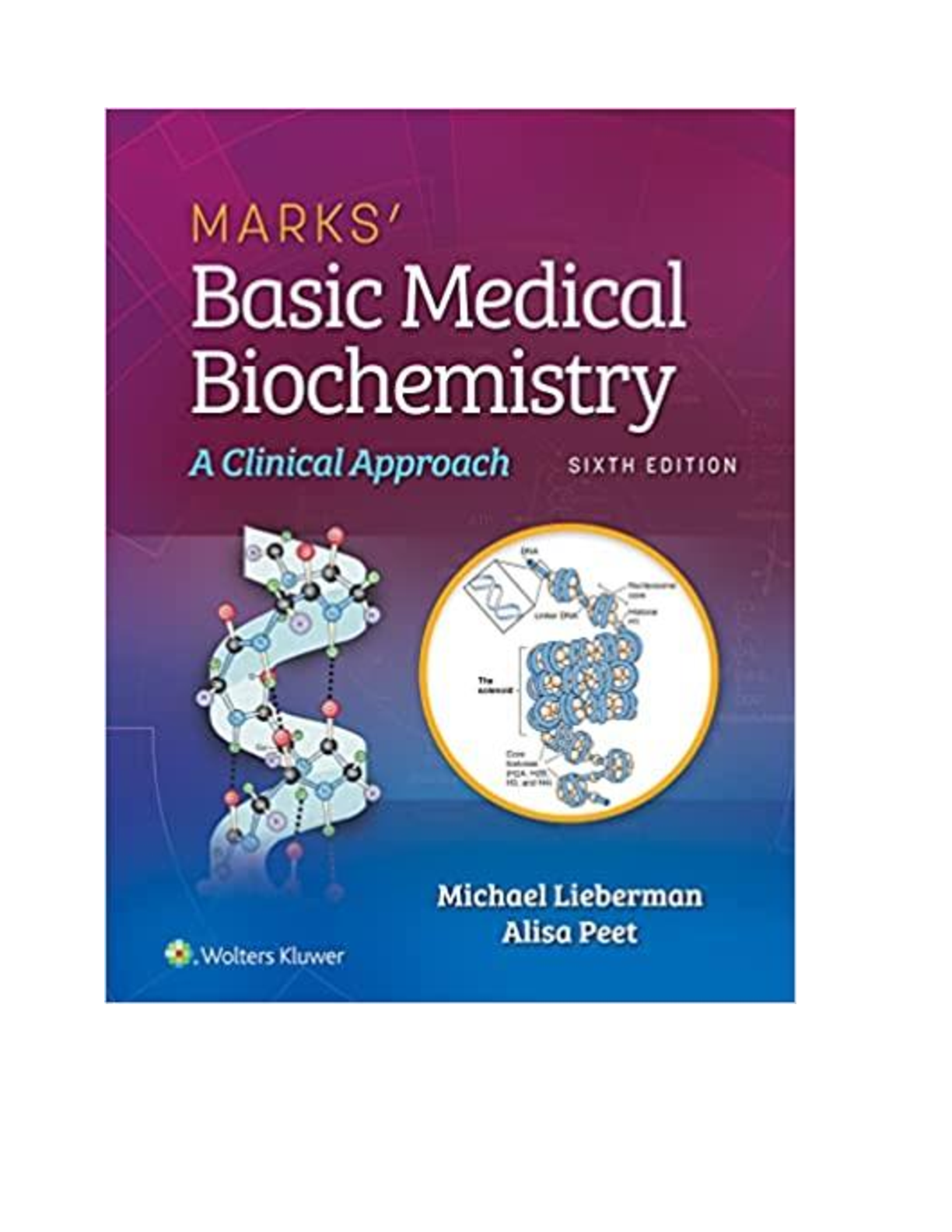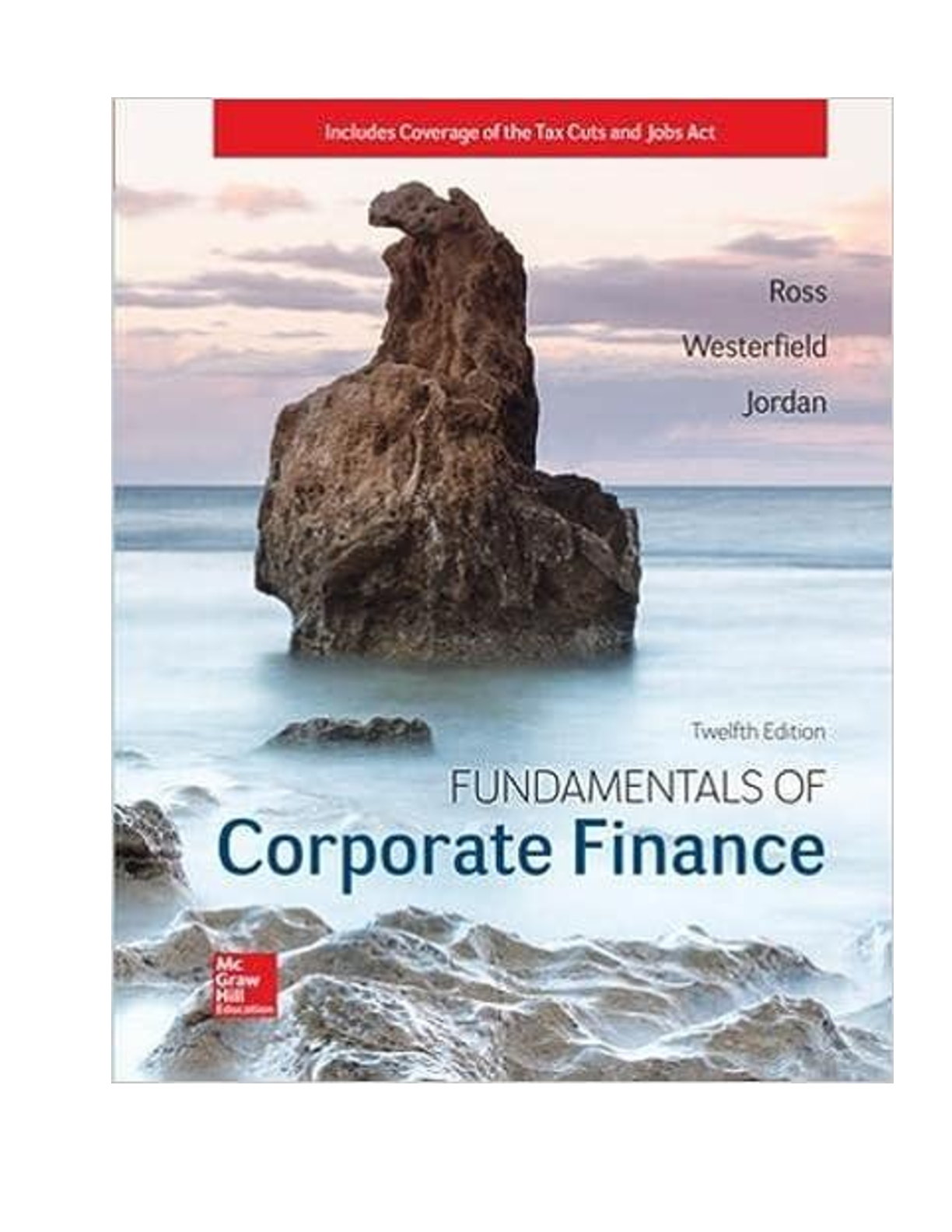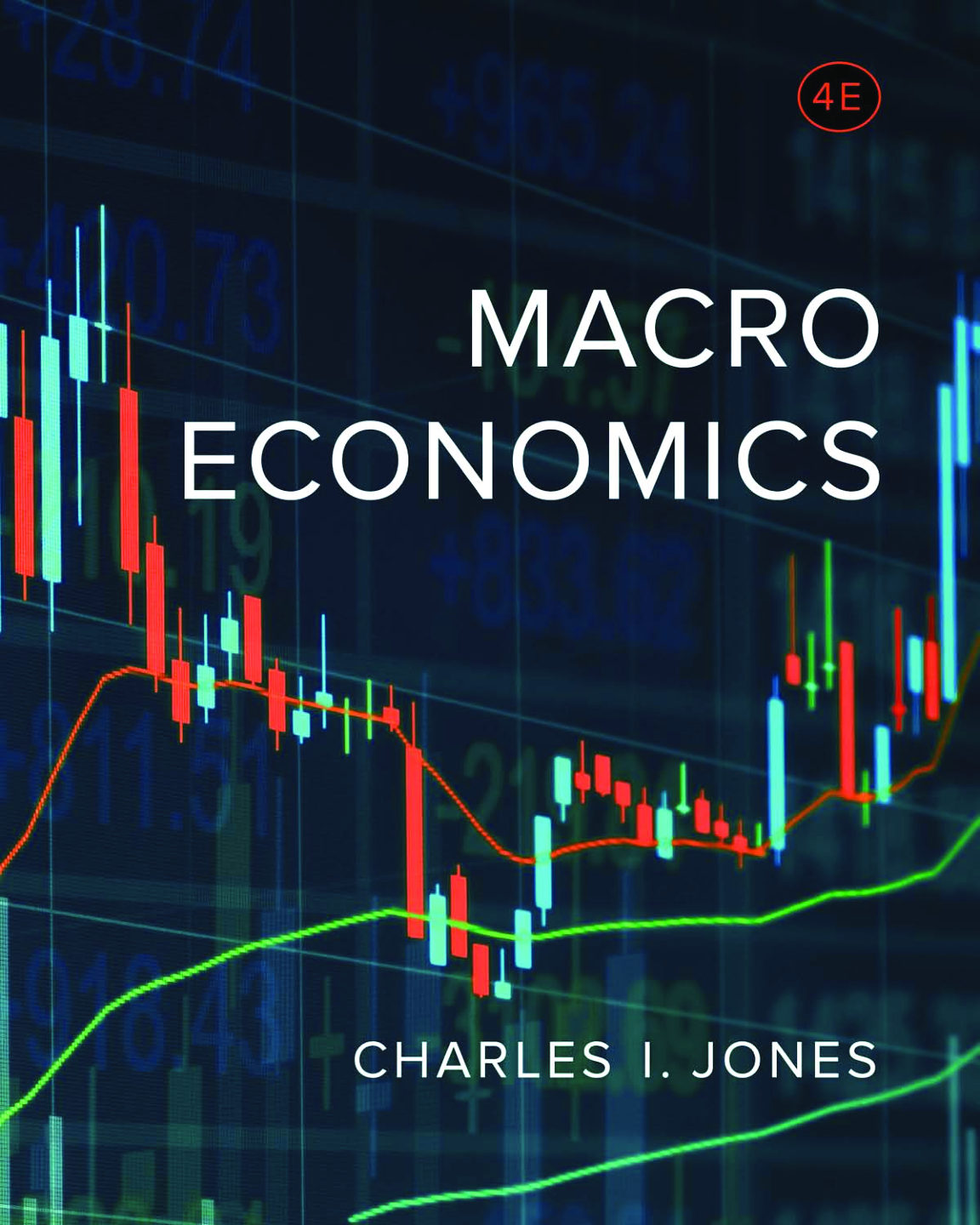Biology > eBook-PDF > Campbell Essential Biology, 6th Edition, By Eric Simon, Jean Dickey, Jane Reece [PDF] [eBook] (All)
Campbell Essential Biology, 6th Edition, By Eric Simon, Jean Dickey, Jane Reece [PDF] [eBook]
Document Content and Description Below
[PDF] [eBook] for Campbell Essential Biology, 6th Edition, By Eric Simon, Jean Dickey, Jane Reece_compressed Campbell essential biology with physiology About the Authors Preface Goals of the Boo... k New to This Edition Develop and practice science literacy skills Explore biology with the most relevant, real-world examples Complex biological processes are explained with engaging visuals and narrated examples in Mastering Biology New approaches to teaching and learning and the resources to accomplish them Engage with biology concepts anytime, anywhere with Pearson eText Reviewers of this Edition Reviewers of Previous Editions Detailed Contents 1 Learning About Life Chapter Contents The Scientific Study of Life An Overview of the Process of Science Exploration Testing Communication and Outcomes Hypotheses, Theories, and Facts Controlled Experiments Evaluating Scientific Claims The Properties of Life Major Themes in Biology The Relationship of Structure to Function Information Flow Pathways That Transform Energy and Matter Interactions within Biological Systems Evolution Chapter Review Summary of Key Concepts The Scientific Study of Life An Overview of the Process of Science Hypotheses, Theories, and Facts Controlled Experiments Evaluating Scientific Claims The Properties of Life Major Themes in Biology Self-Quiz Identifying Major Themes The Process of Science Biology and Society Unit 1 Cells 2 Essential Chemistry for Biology Chapter Contents Some Basic Chemistry Matter: Elements and Compounds Atoms The Structure of Atoms Isotopes Chemical Bonding and Molecules Ionic Bonds Covalent Bonds Hydrogen Bonds Chemical Reactions Water and Life Water The Cohesion of Water How Water Moderates Temperature The Biological Significance of Ice Floating Water as the Solvent of Life Acids, Bases, and pH Chapter Review Summary of Key Concepts Some Basic Chemistry Matter: Elements and Compounds Atoms Chemical Bonding and Molecules Chemical Reactions Water and Life Water Acids, Bases, and pH Self-Quiz Identifying Major Themes The Process of Science Biology and Society 3 The Molecules of Life Chapter Contents Organic Compounds Carbon Chemistry Giant Molecules from Smaller Building Blocks Large Biological Molecules Carbohydrates Monosaccharides Disaccharides Polysaccharides Lipids Fats Steroids Proteins The Monomers of Proteins: Amino Acids Protein Shape Nucleic Acids Chapter Review Summary of Key Concepts Organic Compounds Carbon Chemistry Giant Molecules from Smaller Building Blocks Large Biological Molecules Carbohydrates Lipids Proteins Nucleic Acids Self-Quiz Identifying Major Themes The Process of Science Biology and Society 4 A Tour of the Cell Chapter Contents The Microscopic World of Cells The Two Major Categories of Cells An Overview of Eukaryotic Cells Membrane Structure The Plasma Membrane Cell Surfaces The Nucleus and Ribosomes: Genetic Control of the Cell The Nucleus Ribosomes How DNA Directs Protein Production The Endomembrane System: Manufacturing and Distributing Cellular Products The Endoplasmic Reticulum Rough ER Smooth ER The Golgi Apparatus Lysosomes Vacuoles Chloroplasts and Mitochondria: Providing Cellular Energy Chloroplasts Mitochondria The Cytoskeleton: Cell Shape and Movement Maintaining Cell Shape Flagella and Cilia Chapter Review Summary of Key Concepts The Microscopic World of Cells The Two Major Categories of Cells An Overview of Eukaryotic Cells Membrane Structure The Plasma Membrane Cell Surfaces The Nucleus and Ribosomes: Genetic Control of the Cell The Nucleus Ribosomes How DNA Directs Protein Production The Endomembrane System: Manufacturing and Distributing Cellular Products The Endoplasmic Reticulum The Golgi Apparatus Lysosomes Vacuoles Chloroplasts and Mitochondria: Providing Cellular Energy Chloroplasts and Mitochondria The Cytoskeleton: Cell Shape and Movement Maintaining Cell Shape Cilia and Flagella Self-Quiz Identifying Major Themes The Process of Science Biology and Society 5 The Working Cell Chapter Contents Some Basic Energy Concepts Conservation of Energy Heat Chemical Energy Food Calories ATP and Cellular Work The Structure of ATP Phosphate Transfer The ATP Cycle Enzymes Activation Energy Enzyme Activity Enzyme Inhibitors Membrane Function Passive Transport: Diffusion across Membranes Osmosis and Water Balance Water Balance in Animal Cells Water Balance in Plant Cells Active Transport: The Pumping of Molecules across Membranes Exocytosis and Endocytosis: Traffic of Large Molecules Chapter Review Summary of Key Concepts Some Basic Energy Concepts Conservation of Energy Heat Chemical Energy Food Calories ATP and Cellular Work Enzymes Activation Energy Enzyme Activity Enzyme Inhibitors Membrane Function Passive Transport, Osmosis, and Active Transport Exocytosis and Endocytosis: Traffic of Large Molecules Self-Quiz Identifying Major Themes The Process of Science Biology and Society 6 Cellular Respiration: Obtaining Energy from Food Chapter Contents Energy Flow and Chemical Cycling in the Biosphere Producers and Consumers Chemical Cycling between Photosynthesis and Cellular Respiration Cellular Respiration: Aerobic Harvest of Food Energy An Overview of Cellular Respiration The Three Stages of Cellular Respiration Stage 1: Glycolysis Stage 2: The Citric Acid Cycle Stage 3: Electron Transport The Results of Cellular Respiration Fermentation: Anaerobic Harvest of Food Energy Fermentation in Human Muscle Cells Fermentation in Microorganisms Chapter Review Summary of Key Concepts Energy Flow and Chemical Cycling in the Biosphere Producers and Consumers Chemical Cycling between Photosynthesis and Cellular Respiration Cellular Respiration: Aerobic Harvest of Food Energy An Overview of Cellular Respiration The Three Stages of Cellular Respiration The Results of Cellular Respiration Fermentation: Anaerobic Harvest of Food Energy Fermentation in Human Muscle Cells Fermentation in Microorganisms Self-Quiz Identifying Major Themes The Process of Science Biology and Society 7 Photosynthesis: Using Light to Make Food Chapter Contents The Basics of Photosynthesis Chloroplasts: Sites of Photosynthesis An Overview of Photosynthesis The Light Reactions: Converting Solar Energy to Chemical Energy The Nature of Sunlight Chloroplast Pigments How Photosystems Harvest Light Energy How the Light Reactions Generate ATP and NADPH The Calvin Cycle: Making Sugar from Carbon Dioxide Chapter Review Summary of Key Concepts The Basics of Photosynthesis Chloroplasts: Sites of Photosynthesis An Overview of Photosynthesis The Light Reactions: Converting Solar Energy to Chemical Energy The Nature of Sunlight Chloroplast Pigments How Photosystems Harvest Light Energy and How the Light Reactions Generate ATP and NADPH The Calvin Cycle: Making Sugar from Carbon Dioxide Self-Quiz Identifying Major Themes The Process of Science Biology and Society Unit 2 Genetics 8 Cellular Reproduction: Cells from Cells Chapter Contents What Cell Reproduction Accomplishes The Cell Cycle and Mitosis Eukaryotic Chromosomes Duplicating Chromosomes The Cell Cycle Mitosis and Cytokinesis Cancer Cells: Dividing Out of Control What Is Cancer? Cancer Treatment Frontiers of Cancer Treatment Cancer Prevention and Survival Meiosis, the Basis of Sexual Reproduction Homologous Chromosomes Gametes and the Life Cycle of a Sexual Organism The Process of Meiosis Review: Comparing Mitosis and Meiosis The Origins of Genetic Variation Independent Assortment of Chromosomes Crossing Over When Meiosis Goes Wrong How Accidents During Meiosis Can Alter Chromosome Number Down Syndrome: An Extra Chromosome 21 Abnormal Numbers of Sex Chromosomes Chapter Review Summary of Key Concepts What Cell Reproduction Accomplishes The Cell Cycle and Mitosis Eukaryotic Chromosomes Duplicating Chromosomes The Cell Cycle Mitosis and Cytokinesis Cancer Cells: Dividing Out of Control Meiosis, the Basis of Sexual Reproduction Homologous Chromosomes Gametes and the Life Cycle of a Sexual Organism The Process of Meiosis Review: Comparing Mitosis and Meiosis The Origins of Genetic Variation When Meiosis Goes Wrong Self-Quiz Identifying Major Themes The Process Of Science Biology and Society 9 Patterns of Inheritance Chapter Contents Genetics and Heredity In an Abbey Garden Mendel’s Law of Segregation Inheritance of a Single Character The Relationship between Alleles and Homologous Chromosomes Mendel’s Law of Independent Assortment Using a Testcross to Determine an Unknown Genotype The Rules of Probability Family Pedigrees Human Traits Controlled by a Single Gene Recessive Disorders Dominant Disorders Genetic Testing Variations on Mendel’s Laws Incomplete Dominance in Plants and People ABO Blood Groups: An Example of Multiple Alleles and Codominance Pleiotropy and Sickle-Cell Disease Polygenic Inheritance Epigenetics and the Role of Environment The Chromosomal Basis of Inheritance Linked Genes Sex Determination in Humans Sex-Linked Genes Chapter Review Summary of Key Concepts Genetics and Heredity In an Abbey Garden Mendel’s Law of Segregation Mendel’s Law of Independent Assortment Using a Testcross to Determine an Unknown Genotype The Rules of Probability Family Pedigrees Human Traits Controlled by a Single Gene Variations on Mendel’s Laws Incomplete Dominance in Plants and People ABO Blood Groups: An Example of Multiple Alleles and Codominance Pleiotropy and Sickle-Cell Disease Polygenic Inheritance Epigenetics and the Role of Environment The Chromosomal Basis of Inheritance Linked Genes Sex Determination in Humans Sex-Linked Genes Self-Quiz Identifying Major Themes The Process of Science Biology and Society 10 The Structure and Function of DNA Chapter Contents DNA: Structure and Replication DNA and RNA Structure Watson and Crick’s Discovery of the Double Helix DNA Replication From DNA to RNA to Protein How an Organism’s Genotype Determines Its Phenotype From Nucleotides to Amino Acids: An Overview The Genetic Code Transcription: From DNA to RNA 1 Initiation of Transcription 2 RNA Elongation 3 Termination of Transcription The Processing of Eukaryotic RNA Translation: The Players Messenger RNA (mRNA) Transfer RNA (tRNA) Ribosomes Translation: The Process Initiation Elongation Termination Review: DNA → RNA → Protein Mutations Types of Mutations Mutagens Viruses and Other Noncellular Infectious Agents Bacteriophages Plant Viruses Animal Viruses HIV, the AIDS Virus Prions Chapter Review Summary of Key Concepts DNA: Structure and Replication DNA and RNA Structure Watson and Crick’s Discovery of the Double Helix DNA Replication From DNA to RNA to Protein How an Organism’s Genotype Determines Its Phenotype From Nucleotides to Amino Acids: An Overview The Genetic Code Transcription: From DNA to RNA The Processing of Eukaryotic RNA Translation: The Players Translation: The Process Review: DNA → RNA → Protein Mutations Viruses and Other Noncellular Infectious Agents Bacteriophages Plant Viruses Animal Viruses HIV, the AIDS Virus Prions Self-Quiz Identifying Major Themes The Process of Science Biology and Society 11 How Genes Are Controlled Chapter Contents How and Why Genes Are Regulated Gene Regulation in Bacteria Gene Regulation in Eukaryotic Cells The Regulation of DNA Packing The Initiation of Transcription RNA Processing and Breakdown microRNAs The Initiation of Translation Protein Activation and Breakdown Cell Signaling Homeotic Genes Visualizing Gene Expression Cloning Plants and Animals The Genetic Potential of Cells Reproductive Cloning of Animals Practical Applications of Reproductive Cloning Human Cloning Therapeutic Cloning and Stem Cells Embryonic Stem Cells Umbilical Cord Blood Banking Adult Stem Cells The Genetic Basis of Cancer Genes That Cause Cancer Oncogenes and Tumor-Suppressor Genes The Progression of a Cancer Inherited Cancer Cancer Risk and Prevention Chapter Review Summary of Key Concepts How and Why Genes Are Regulated Gene Regulation in Bacteria Gene Regulation in Eukaryotic Cells Cell Signaling Homeotic Genes Visualizing Gene Expression Cloning Plants and Animals The Genetic Potential of Cells Reproductive Cloning of Animals Therapeutic Cloning and Stem Cells The Genetic Basis of Cancer Genes That Cause Cancer Cancer Risk and Prevention Self-Quiz Identifying Major Themes The Process of Science Biology and Society 12 DNA Technology Chapter Contents Genetic Engineering Recombinant DNA Techniques How to Clone a Gene Cutting and Pasting DNA with Restriction Enzymes Gene Editing Medical Applications Genetically Modified Organisms in Agriculture Human Gene Therapy DNA Profiling and Forensic Science DNA Profiling Techniques The Polymerase Chain Reaction (PCR) Short Tandem Repeat (STR) Analysis Gel Electrophoresis Investigating Murder, Paternity, and Ancient DNA Bioinformatics DNA Sequencing Genomics Genome-Mapping Techniques The Human Genome Applied Genomics Systems Biology Safety and Ethical Issues The Controversy over Genetically Modified Foods Ethical Questions Raised by Human DNA Technologies Chapter Review Summary of Key Concepts Genetic Engineering Recombinant DNA Techniques Gene Editing Medical Applications Genetically Modified Organisms in Agriculture Human Gene Therapy DNA Profiling and Forensic Science DNA Profiling Techniques Investigating Murder, Paternity, and Ancient DNA Bioinformatics DNA Sequencing Genomics Genome-Mapping Techniques The Human Genome Applied Genomics Systems Biology Safety and Ethical Issues The Controversy over Genetically Modified Foods Ethical Questions Raised by Human DNA Technologies Self-Quiz Identifying Major Themes The Process of Science Biology and Society Unit 3 Evolution and Diversity 13 How Populations Evolve Chapter Contents The Diversity of Life Naming and Classifying the Diversity of Life Explaining the Diversity of Life The Idea of Fixed Species Lamarck and Evolutionary Adaptations Charles Darwin and The Origin of Species Darwin’s Journey Observations New Insights Darwin’s Theory Evidence of Evolution Evidence from Fossils Evidence from Homologies Evolutionary Trees Natural Selection as the Mechanism for Evolution Natural Selection in Action Key Points about Natural Selection The Evolution of Populations Sources of Genetic Variation Mutation Sexual Reproduction Populations as the Units of Evolution Analyzing Gene Pools Population Genetics and Health Science Microevolution as Change in a Gene Pool Mechanisms of Evolution Natural Selection Genetic Drift The Bottleneck Effect The Founder Effect Gene Flow Natural Selection: A Closer Look Evolutionary Fitness Sexual Selection Three General Outcomes of Natural Selection Chapter Review Summary of Key Concepts The Diversity of Life Naming and Classifying the Diversity of Life Explaining the Diversity of Life Charles Darwin and The Origin of Species Darwin’s Journey Darwin’s Theory Evidence of Evolution Evidence from Fossils Evidence from Homologies Evolutionary Trees Natural Selection as the Mechanism for Evolution Natural Selection in Action Key Points about Natural Selection The Evolution of Populations Sources of Genetic Variation Populations as the Units of Evolution Analyzing Gene Pools Population Genetics and Health Science Microevolution as Change in a Gene Pool Mechanisms of Evolution Natural Selection Genetic Drift Gene Flow Natural Selection: A Closer Look Self-Quiz Identifying Major Themes The Process of Science Biology and Society 14 How Biological Diversity Evolves Chapter Contents The Origin of Species What Is a Species? Reproductive Barriers between Species Mechanisms of Speciation Allopatric Speciation Sympatric Speciation Island Showcases of Speciation Observing Speciation in Progress Earth History and Macroevolution The Fossil Record Plate Tectonics and Biogeography Mass Extinctions and Explosive Diversifications of Life Mechanisms of Macroevolution Large Effects from Small Genetic Changes The Evolution of Biological Novelty Adaptation of Old Structures for New Functions From Simple to Complex Structures in Gradual Stages Classifying the Diversity of Life Classification and Phylogeny Identifying Homologous Characters Inferring Phylogeny from Homologous Characters Classification: A Work in Progress Chapter Review Summary of Key Concepts The Origin of Species What Is a Species? Reproductive Barriers between Species Mechanisms of Speciation Earth History and Macroevolution The Fossil Record Plate Tectonics and Biogeography Mass Extinctions and Explosive Diversifications of Life Mechanisms of Macroevolution Large Effects from Small Genetic Changes The Evolution of Biological Novelty Classifying the Diversity of Life Classification and Phylogeny Classification: A Work in Progress Self-Quiz Identifying Major Themes The Process of Science Biology and Society 15 The Evolution of Microbial Life Chapter Contents Major Episodes in the History of Life The Origin of Life A Four-Stage Hypothesis for the Origin of Life Stage 1: Synthesis of Organic Compounds Stage 2: Abiotic Synthesis of Polymers Stage 3: Formation of Pre-Cells Stage 4: Origin of Self-Replicating Molecules From Chemical Evolution to Darwinian Evolution Prokaryotes They’re Everywhere! The Structure and Function of Prokaryotes Prokaryotic Forms Prokaryotic Reproduction Prokaryotic Nutrition The Ecological Impact of Prokaryotes Prokaryotes and Chemical Recycling Putting Prokaryotes to Work The Two Main Branches of Prokaryotic Evolution: Bacteria and Archaea Archaea in Extreme Environments Bacteria That Cause Disease Protists Protozoans Slime Molds Unicellular and Colonial Algae Seaweeds Chapter Review Summary of Key Concepts Major Episodes in the History of Life The Origin of Life A Four-Stage Hypothesis for the Origin of Life From Chemical Evolution to Darwinian Evolution Prokaryotes They’re Everywhere! Prokaryotes The Ecological Impact of Prokaryotes The Two Main Branches of Prokaryotic Evolution: Bacteria and Archaea Protists Protozoans Slime Molds Unicellular and Colonial Algae Seaweeds Self-Quiz Identifying Major Themes The Process of Science Biology and Society 16 The Evolution of Plants and Fungi Chapter Contents Colonizing Land Terrestrial Adaptations of Plants Adaptations of the Plant Body Reproductive Adaptations The Origin of Plants from Green Algae Plant Diversity Highlights of Plant Evolution Bryophytes Ferns Gymnosperms Conifers Terrestrial Adaptations of Seed Plants Angiosperms Flowers, Fruits, and the Angiosperm Life Cycle Angiosperms and Agriculture Plant Diversity as a Nonrenewable Resource Fungi Characteristics of Fungi Fungal Nutrition Fungal Structure Fungal Reproduction The Ecological Impact of Fungi Fungi as Decomposers Parasitic Fungi Commercial Uses of Fungi Chapter Review Summary of Key Concepts Colonizing Land Terrestrial Adaptations of Plants The Origin of Plants from Green Algae Plant Diversity Highlights of Plant Evolution Bryophytes Ferns Gymnosperms Angiosperms Plant Diversity as a Nonrenewable Resource Fungi Characteristics of Fungi The Ecological Impact of Fungi Commercial Uses of Fungi Self-Quiz Identifying Major Themes The Process of Science Biology and Society 17 The Evolution of Animals Chapter Contents The Origins of Animal Diversity What Is an Animal? Early Animals and the Cambrian Explosion Animal Phylogeny Major Invertebrate Phyla Sponges Cnidarians Molluscs Flatworms Annelids Roundworms Arthropods General Characteristics of Arthropods Arachnids Crustaceans Millipedes and Centipedes Insect Anatomy Insect Diversity Echinoderms Vertebrate Evolution and Diversity Characteristics of Chordates Fishes Amphibians Reptiles Nonbird Reptiles Birds Mammals The Human Ancestry The Evolution of Primates The Emergence of Humankind Some Common Misconceptions Australopithecus and the Antiquity of Bipedalism Homo habilis and the Evolution of Inventive Minds Homo erectus and the Global Dispersal of Humanity Homo neanderthalensis The Origin and Dispersal of Homo sapiens Background Method Results Chapter Review Summary of Key Concepts The Origins of Animal Diversity What Is an Animal? Early Animals and the Cambrian Explosion Animal Phylogeny Major Invertebrate Phyla Sponges Cnidarians Molluscs Flatworms Annelids Roundworms Arthropods Echinoderms Vertebrate Evolution and Diversity Characteristics of Chordates Fishes Amphibians Reptiles Mammals The Human Ancestry The Evolution of Primates The Emergence of Humankind Self-Quiz Identifying Major Themes The Process of Science Biology and Society Unit 4 Ecology 18 An Introduction to Ecology and the Biosphere Chapter Contents An Overview of Ecology Ecology and Environmentalism A Hierarchy of Interactions Living in Earth’s Diverse Environments Abiotic Factors of the Biosphere Energy Source Temperature Water Inorganic Nutrients Other Aquatic Factors Other Terrestrial Factors The Evolutionary Adaptations of Organisms Adjusting to Environmental Variability Physiological Responses Anatomical Responses Behavioral Responses Biomes Freshwater Biomes Lakes and Ponds Rivers and Streams Wetlands Marine Biomes How Climate Affects Terrestrial Biome Distribution Terrestrial Biomes Tropical Forest Savanna Desert Chaparral Temperate Grassland Temperate Broadleaf Forest Coniferous Forest Tundra Polar Ice The Water Cycle Human Impact on Biomes Forests Fresh Water Climate Change The Greenhouse Effect and Global Warming The Accumulation of Greenhouse Gases Effects of Climate Change on Ecosystems Looking to Our Future Chapter Review Summary of Key Concepts An Overview of Ecology Ecology and Environmentalism A Hierarchy of Interactions Living in Earth’s Diverse Environments Abiotic Factors of the Biosphere The Evolutionary Adaptations of Organisms Adjusting to Environmental Variability Biomes Freshwater Biomes Marine Biomes How Climate Affects Terrestrial Biome Distribution Terrestrial Biomes The Water Cycle Human Impact on Biomes Climate Change The Greenhouse Effect and Global Warming The Accumulation of Greenhouse Gases Effects of Climate Change on Ecosystems Looking to Our Future Self-Quiz Identifying Major Themes The Process of Science Biology and Society 19 Population Ecology Chapter Contents An Overview of Population Ecology Population Density Population Age Structure Life Tables and Survivorship Curves Life History Traits as Adaptations Population Growth Models The Exponential Population Growth Model: The Ideal of an Unlimited Environment The Logistic Population Growth Model: The Reality of a Limited Environment Regulation of Population Growth Density-Dependent Factors Density-Independent Factors Population Cycles Applications of Population Ecology Conservation of Endangered Species Sustainable Resource Management Invasive Species Biological Control of Pests Integrated Pest Management Human Population Growth The History of Human Population Growth Age Structures Our Ecological Footprint Chapter Review Summary of Key Concepts An Overview of Population Ecology Population Density Population Age Structure Life Tables and Survivorship Curves Life History Traits as Adaptations Population Growth Models The Exponential Population Growth Model: The Ideal of an Unlimited Environment The Logistic Population Growth Model: The Reality of a Limited Environment Regulation of Population Growth Applications of Population Ecology Conservation of Endangered Species Sustainable Resource Management Invasive Species Biological Control of Pests Integrated Pest Management Human Population Growth The History of Human Population Growth Age Structures Our Ecological Footprint Self-Quiz Identifying Major Themes The Process of Science Biology and Society 20 Communities and Ecosystems Chapter Contents Biodiversity Genetic Diversity Species Diversity Ecosystem Diversity Causes of Declining Biodiversity Habitat Destruction Invasive Species Overexploitation Pollution Community Ecology Interspecific Interactions Interspecific Competition (−/−) Mutualism (+/+) Predation (+/−) Herbivory (+/−) Parasites and Pathogens (+/−) Commensalism (+/0) Trophic Structure Biological Magnification Food Webs Species Diversity in Communities Disturbances and Succession in Communities Ecological Succession Ecosystem Ecology Energy Flow in Ecosystems Primary Production and the Energy Flow in Ecosystems Ecological Pyramids Ecosystem Energetics and Human Resource Use Chemical Cycling in Ecosystems The General Scheme of Chemical Cycling The Carbon Cycle The Phosphorus Cycle The Nitrogen Cycle Nutrient Pollution Conservation and Restoration Biology Biodiversity "Hot Spots" Conservation at the Ecosystem Level Restoring Ecosystems The Goal of Sustainable Development Chapter Review Summary of Key Concepts Biodiversity Causes of Declining Biodiversity Community Ecology Interspecific Interactions Trophic Structure Species Diversity in Communities Disturbances and Succession in Communities Ecological Succession Ecosystem Ecology Energy Flow in Ecosystems Chemical Cycling in Ecosystems Conservation and Restoration Biology Biodiversity "Hot Spots" Conservation at the Ecosystem Level Restoring Ecosystems The Goal of Sustainable Development Self-Quiz Identifying Major Themes The Process of Science Biology and Society Unit 5 Animal Structure and Function 21 Unifying Concepts of Animal Structure and Function Chapter Contents The Structural Organization of Animals Anatomy and Physiology Tissues Epithelial Tissue Connective Tissue Muscle Tissue Nervous Tissue Organs and Organ Systems Exchanges with the External Environment Regulating the Internal Environment Homeostasis Negative and Positive Feedback Thermoregulation Osmoregulation Homeostasis in the Urinary System Chapter Review Summary of Key Concepts The Structural Organization of Animals Anatomy and Physiology Tissues Organs and Organ Systems Exchanges with the External Environment Regulating the Internal Environment Homeostasis Negative and Positive Feedback Thermoregulation Osmoregulation Homeostasis in the Urinary System Self-Quiz Identifying Major Themes The Process of Science Biology and Society 22 Nutrition and Digestion Chapter Contents An Overview of Animal Nutrition Animal Diets The Four Stages of Food Processing Digestion: A Closer Look Digestive Compartments A Tour of the Human Digestive System System Map The Mouth The Pharynx The Esophagus The Stomach Stomach Ailments Weight Loss Surgeries The Small Intestine Chemical Digestion in the Small Intestine Absorption of Nutrients The Human Microbiome The Large Intestine Human Nutritional Requirements Food as Fuel Calories Metabolic Rate Food as Building Material Essential Amino Acids Vitamins Minerals Essential Fatty Acids Decoding Food Labels Nutritional Disorders Malnutrition Eating Disorders Obesity Chapter Review Summary of Key Concepts An Overview of Animal Nutrition Animal Diets The Four Stages of Food Processing Digestive Compartments A Tour of the Human Digestive System System Map The Mouth, the Pharynx, the Esophagus The Stomach The Small Intestine The Human Microbiome The Large Intestine Human Nutritional Requirements Food as Fuel Food as Building Material Decoding Food Labels Nutritional Disorders Malnutrition Eating Disorders Obesity Self-Quiz Identifying Major Themes The Process of Science Biology and Society 23 Circulation and Respiration Chapter Contents Unifying Concepts of Animal Circulation The Human Cardiovascular System The Path of Blood How the Heart Works The Cardiac Cycle The Pacemaker and the Control of Heart Rate Blood Vessels Blood Flow through Arteries Blood Flow through Capillary Beds Blood Return through Veins Blood Red Blood Cells Blood Doping White Blood Cells and Defense Platelets and Blood Clotting Donating Blood Cardiovascular Disease Unifying Concepts of Animal Respiration The Human Respiratory System The Path of Air The Brain’s Control over Breathing The Role of Hemoglobin in Gas Transport The Toll of Smoking on the Lungs Chapter Review Summary of Key Concepts Unifying Concepts of Animal Circulation The Human Cardiovascular System The Path of Blood How the Heart Works Blood Vessels Blood Cardiovascular Disease Unifying Concepts of Animal Respiration The Human Respiratory System The Path of Air The Brain’s Control over Breathing The Role of Hemoglobin in Gas Transport The Toll of Smoking on the Lungs Self-Quiz Identifying Major Themes The Process of Science Biology and Society 24 The Body’s Defenses Chapter Contents An Overview of the Immune System Innate Immunity External Innate Defenses Internal Innate Defenses The Lymphatic System Circulatory Function Immune Function Adaptive Immunity Step 1: Recognizing the Invaders Step 2: Cloning the Responders Step 3: Responding to Invaders The Helper T Cell Response The B Cell Response The Cytotoxic T Cell Response Step 4: Remembering Invaders Immune Disorders Allergies Autoimmune Diseases Immunodeficiency Diseases AIDS Chapter Review Summary of Key Concepts An Overview of the Immune System Innate Immunity The Lymphatic System Circulatory Function Immune Function Adaptive Immunity Step 1: Recognizing the Invaders Step 2: Cloning the Responders Step 3: Responding to Invaders Step 4: Remembering Invaders Immune Disorders Allergies Autoimmune Diseases Immunodeficiency Diseases AIDS Self-Quiz Identifying Major Themes The Process of Science Biology and Society 25 Hormones Chapter Contents Hormones: An Overview The Human Endocrine System The Hypothalamus and Pituitary Gland The Thyroid and Metabolism The Pancreas and Blood Glucose The Adrenal Glands and Stress The Gonads and Sex Hormones Mimicking Sex Hormones Chapter Review Summary of Key Concepts Hormones: An Overview The Human Endocrine System The Hypothalamus and Pituitary Gland The Thyroid and Metabolism The Pancreas and Blood Glucose The Adrenal Glands and Stress The Gonads and Sex Hormones Mimicking Sex Hormones Self-Quiz Identifying Major Themes The Process of Science Biology and Society 26 Reproduction and Development Chapter Contents Unifying Concepts of Animal Reproduction Asexual Reproduction Sexual Reproduction Human Reproduction Male Reproductive Anatomy Female Reproductive Anatomy Gametogenesis Spermatogenesis Oogenesis Gamete Formation in Males versus Females The Female Reproductive Cycle Reproductive Health Contraception Sexually Transmitted Infections Human Development Fertilization by Sperm Basic Concepts of Embryonic Development Pregnancy and Early Development The Stages of Pregnancy The First Trimester The Second Trimester The Third Trimester Childbirth Reproductive Technologies Infertility In Vitro Fertilization The Ethics of IVF Chapter Review Summary of Key Concepts Unifying Concepts of Animal Reproduction Asexual Reproduction Sexual Reproduction Human Reproduction Male Reproductive Anatomy Female Reproductive Anatomy Gametogenesis The Female Reproductive Cycle Reproductive Health Contraception Sexually Transmitted Infections Human Development Fertilization by Sperm Basic Concepts of Embryonic Development Pregnancy and Early Development The Stages of Pregnancy Childbirth Reproductive Technologies Infertility In Vitro Fertilization The Ethics of IVF Self-Quiz Identifying Major Themes The Process of Science Biology and Society 27 Nervous, Sensory, and Locomotor Systems Chapter Contents An Overview of Animal Nervous Systems Neurons Organization of Nervous Systems Sending a Signal through a Neuron The Action Potential Propagation of the Signal Passing a Signal from a Neuron to a Receiving Cell Chemical Synapses Drugs and the Brain The Human Nervous System: A Closer Look The Central Nervous System The Peripheral Nervous System The Human Brain The Cerebral Cortex Neuroplasticity Neurological Disorders The Senses Sensory Input Converting a Stimulus to an Electrical Signal Types of Sensory Receptors Vision Lighting the Retina Photoreceptors Imperfect Vision Hearing Locomotor Systems The Skeletal System Organization of the Human Skeleton The Structure of Bones Skeletal Diseases and Injuries The Muscular System The Cellular Basis of Muscle Contraction Motor Neurons: Control of Muscle Contraction Stimulus and Response: Putting It All Together Chapter Review Summary of Key Concepts An Overview of Animal Nervous Systems Neurons Organization of Nervous Systems Sending a Signal through a Neuron Passing a Signal from a Neuron to a Receiving Cell The Human Nervous System: A Closer Look The Central Nervous System and the Peripheral Nervous System The Human Brain The Senses Sensory Input Vision Hearing Locomotor Systems The Skeletal System The Muscular System Stimulus and Response: Putting It All Together Self-Quiz Identifying Major Themes The Process of Science Biology and Society Unit 6 Plant Structure and Function 28 The Life of a Flowering Plant Chapter Contents The Structure and Function of a Flowering Plant Monocots and Eudicots Roots, Stems, and Leaves Roots Stems Leaves Plant Tissues and Tissue Systems Plant Cells Plant Growth Primary Growth: Lengthening Secondary Growth: Thickening The Life Cycle of a Flowering Plant The Flower Overview of the Flowering Plant Life Cycle Pollination and Fertilization Seed Formation Fruit Formation Seed Germination Chapter Review Summary of Key Concepts The Structure and Function of a Flowering Plant Monocots and Eudicots Roots, Stems, and Leaves Plant Tissues and Tissue Systems Plant Cells Plant Growth Primary Growth: Lengthening Secondary Growth: Thickening The Life Cycle of a Flowering Plant The Flower Overview of the Flowering Plant Life Cycle Pollination and Fertilization Seed Formation Fruit Formation Seed Germination Self-Quiz Identifying Major Themes The Process of Science Biology and Society 29 The Working Plant Chapter Contents How Plants Acquire and Transport Nutrients Plant Nutrition From the Soil into the Roots The Role of Bacteria in Nitrogen Nutrition Soil Bacteria and Nitrogen Root Nodule Bacteria and Nitrogen The Transport of Water The Ascent of Xylem Sap The Regulation of Transpiration by Stomata The Transport of Sugars Economic Uses of Plant Transport Products Plant Hormones Auxins Cytokinins Ethylene Gibberellins Abscisic Acid Response to Stimuli Tropisms Photoperiodism Chapter Review Summary of Key Concepts How Plants Acquire and Transport Nutrients Plant Nutrition From the Soil into the Roots The Role of Bacteria in Nitrogen Nutrition The Transport of Water The Transport of Sugars Plant Hormones Auxins Ethylene Cytokinins Gibberellins Abscisic Acid Response to Stimuli Tropisms Photoperiodism Self-Quiz Identifying Major Themes The Process of Science Biology and Society [Show More]
Last updated: 1 year ago
Preview 1 out of 600 pages
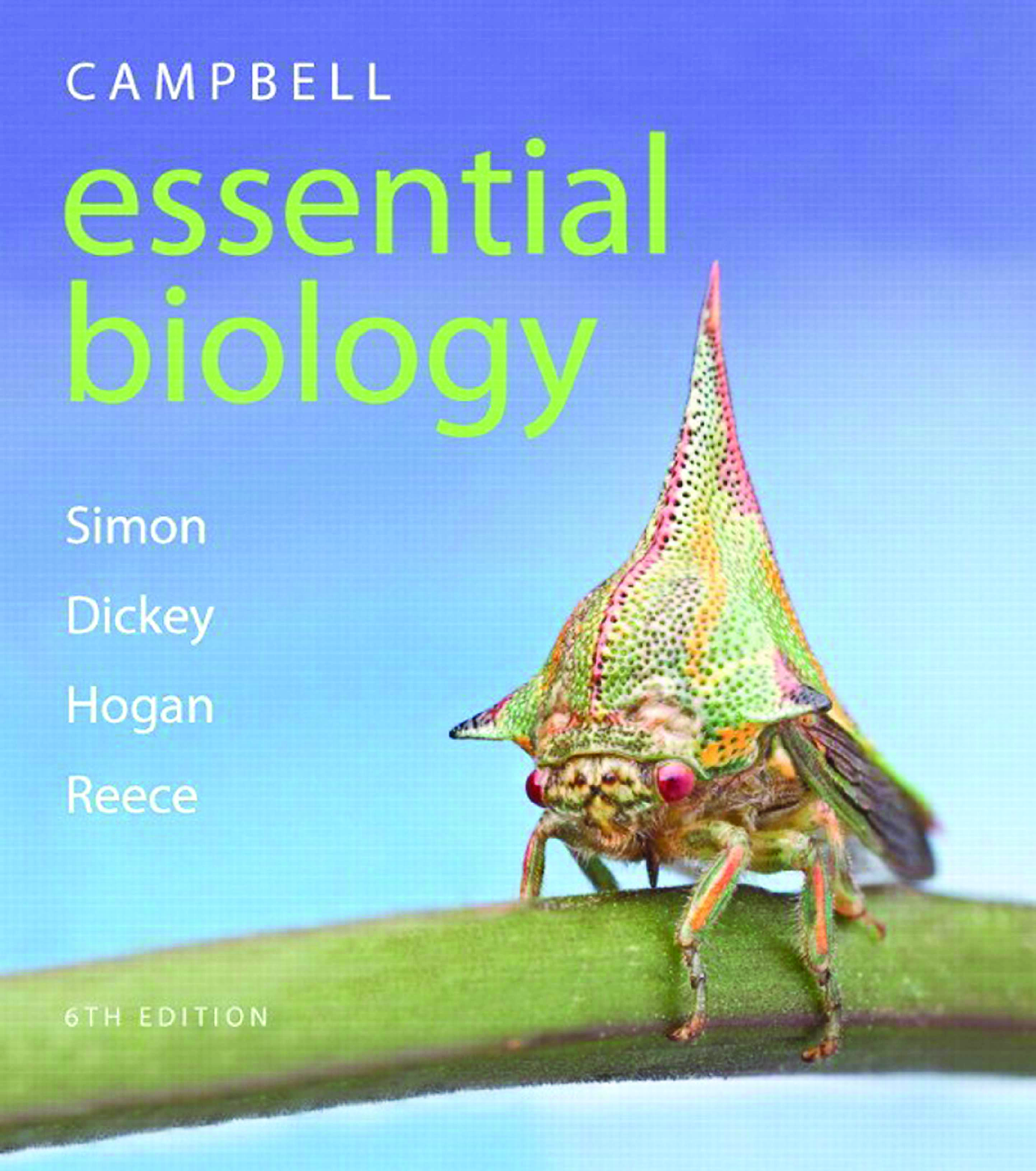
Reviews( 0 )
Document information
Connected school, study & course
About the document
Uploaded On
Dec 19, 2022
Number of pages
600
Written in
Additional information
This document has been written for:
Uploaded
Dec 19, 2022
Downloads
0
Views
47

